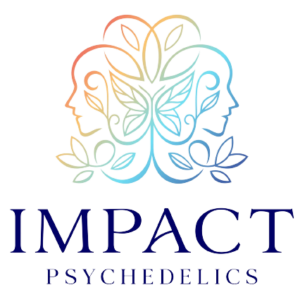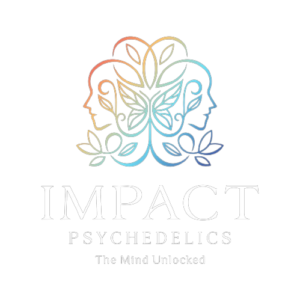Exploring the Miracle of Ketamine: Unraveling Its Role in Alleviating Chronic Pain
If you’re one of the millions of people who suffer from chronic pain, you know how exhausting and debilitating it can be. Despite countless medications, treatments, and therapies, finding lasting relief can feel impossible.
That’s where ketamine comes in. This powerful anesthetic has been hailed as a groundbreaking treatment for chronic pain sufferers, but how exactly does it work? In this blog post, we’ll break down the science behind ketamine and how it can help alleviate chronic pain.
From the chemical makeup of the drug to the ways it affects the brain and nervous system, we’ll explore everything you need to know about this promising treatment option. So if you’re looking for answers, keep reading to dive deeper into the world of ketamine and chronic pain relief.
Ketamine, a versatile anesthetic drug initially developed for surgical procedures, has been found to have incredible therapeutic properties in patients suffering from various types of chronic pain. Despite its controversial reputation as a recreational drug, research has exhaustively explored the many beneficial effects of ketamine, and the results suggest that it holds immense promise as a treatment for those whose pain is otherwise untreatable with conventional medications.
But how does it work, precisely? Over the years, many theories have been proposed, and several mechanisms of action have been identified, yet there is still no clear consensus among experts. This article will explore the miracle of ketamine, unraveling its role in alleviating chronic pain, and examining the various factors that contribute to its effectiveness.
1. Introduction to Ketamine
Ketamine has been making waves in the medical community in recent years for its potential as a treatment for chronic pain. Originally developed as an anesthetic and pain-relieving drug, ketamine has since shown to provide much more than just temporary relief.
It has been suggested that ketamine could be used to treat a wide range of conditions like depression, anxiety, and even PTSD. However, it’s use as a pain relief medication has opened up a whole new world of possibilities.
So what exactly is ketamine and how does it work? At its core, ketamine is a powerful analgesic that reduces the transmission of pain signals to the brain. It works by binding to a type of receptor in the brain known as N-methyl-D-aspartate (NMDA) receptors.
These receptors play a key role in the perception of pain, meaning that by inhibiting their activity, ketamine can effectively reduce the sensation of pain.Described by some as a “miracle drug”, ketamine is unlike other painkillers currently on the market.
Unlike opioids, which can cause addiction and other severe side effects, ketamine is non-addictive and has very low toxicity. It is also fast-acting, with many users reporting a reduction in pain within just hours of receiving the drug.
Despite its promising potential as a pain relief medication, ketamine is not without its controversies. Concerns have been raised about its possible misuse, its long-term effects on the brain, and its potential for abuse.
However, with the current opioid epidemic causing widespread concern and a desperate need for new pain relief solutions, ketamine’s role in alleviating chronic pain is definitely worth exploring further.
2. Understanding Chronic Pain
Chronic Pain is a widespread medical condition that affects millions of people worldwide. The symptoms of chronic pain typically last several months or longer, causing discomfort and distress to the individual.
This pain can be triggered by a variety of reasons, including disease, injury, nerve damage, or even psychological causes.Understanding the underlying causes of chronic pain can be a challenging task, as each person experiences it differently.
While traditional pain management strategies may help alleviate symptoms, they may also come with the risk of dependency or addiction. This is where Ketamine, a dissociative anesthetic, comes in handy in changing the game of pain management.
Ketamine has been shown to be effective in treating chronic pain, especially in individuals who have become resistant to conventional treatments. Its unique mechanism of action produces a dissociative effect that helps individuals disassociate from their pain, providing much-needed relief and putting them in a better state of mind.
Moreover, studies show that Ketamine administration affects various neurotransmitters, including NMDA, AMPA, and GABA, which are essential in pain modulation, antidepressant, and anxiolytic effects. Furthermore, Ketamine can play a crucial role in promoting neuroplasticity, assisting the brain to rewire itself to reduce pain sensation.
The efficient use of Ketamine has also been explored in the management of systemic sclerosis, the post-operative period, phantom limb syndrome, and neuropathic pain. In short, Ketamine has proven to be a promising option for managing chronic pain, and its unique mechanism of action offers an approachable solution for those that have exhausted all other options.
3. How Ketamine Works
The mystery of how ketamine works to alleviate chronic pain continues to baffle many medical professionals. What we do know is that ketamine is a powerful anesthetic, first introduced in the 1960s as a safer alternative to other potent anesthesia drugs.
We also know that it works by targeting the brain’s glutamate system, which is responsible for regulating pain signals. When administered in low doses, ketamine can provide immediate relief to chronic pain sufferers by rebooting the hypersensitive pain receptors in the brain.
The effects are often described as transformative, with patients able to resume normal activities that were once out of reach due to their pain. However, the long-term benefits of ketamine are still being studied and debated within the medical community.
One theory is that ketamine helps to decrease inflammation in the body by activating a specific type of pain receptor known as the NMDA receptor. This receptor plays a crucial role in the development and maintenance of chronic pain, and by targeting it, ketamine may be able to provide lasting relief to patients.
Despite its potential benefits, ketamine is not without its risks and side effects. High doses of the drug can cause hallucinations, disorientation, and even unconsciousness.
As such, it is typically administered in a controlled setting under the close supervision of a medical professional. In conclusion, while the exact mechanisms behind ketamine’s pain-relieving abilities remain elusive, the drug continues to hold promise as a potential treatment option for chronic pain sufferers.
As more research is conducted, we may be able to unlock the full potential of this miraculous substance and help alleviate the suffering of those in chronic pain.
4. Benefits of Ketamine Treatment
When it comes to treating chronic pain, ketamine has emerged as a promising solution that has the potential to change the game. So what makes ketamine different from traditional pain medications? Well, for one, ketamine targets the NMDA (N-methyl-D-aspartate) receptors in the brain, which are responsible for regulating pain signals.
By blocking these receptors, ketamine can effectively reduce pain and improve a patient’s quality of life. One of the major benefits of ketamine treatment is its fast-acting nature.
Unlike other pain medications that can take hours or even days to take effect, ketamine can provide relief within minutes. This makes it an ideal option for patients who are experiencing severe or acute pain, as well as those who have struggled to find relief through other medications.
Another advantage of ketamine treatment is its ability to reduce inflammation. Chronic pain often goes hand in hand with inflammation, which can exacerbate the symptoms and make it more difficult to manage.
By reducing inflammation, ketamine can help to alleviate pain and promote faster healing. Perhaps most importantly, ketamine treatment has been shown to be effective for a wide range of conditions.
From migraines and fibromyalgia to neuropathic pain and CRPS (complex regional pain syndrome), ketamine has been used to successfully treat a variety of chronic pain conditions. And with fewer side effects than many traditional pain medications, it’s quickly becoming a go-to option for both patients and healthcare professionals.
In short, the benefits of ketamine treatment are many and varied, making it a powerful and promising tool in the fight against chronic pain. Whether you’re dealing with a specific condition or simply looking for relief from ongoing pain, ketamine may be able to offer the comprehensive relief you’ve been searching for.
5. Safety and Side Effects
The safety and potential side effects of ketamine use have been a concern for many healthcare practitioners and potential users alike. While ketamine has shown impressive efficacy in treating chronic pain, rapid depression relief, and other mental health disorders, it has also been associated with various side effects that need to be carefully monitored.
For one, ketamine use can lead to dissociative effects, which means users may experience a sense of detachment from reality, hallucinations, or even temporary memory loss. Other side effects include nausea, vomiting, dizziness, and increased heart rate, all of which can be minimized by administering ketamine doses in a controlled setting and with appropriate monitoring.
Though it may sound alarming, the takeaway is that the majority of the side effects of ketamine use are relatively mild and temporary. What’s more, many of these effects can be avoided altogether by working with a trained and experienced healthcare professional who understands how to safely use ketamine in its various forms.
It’s worth noting that the safety and regulatory landscape for ketamine is rapidly evolving, with increasing evidence pointing towards its efficacy for a range of conditions. As such, it’s important to stay up-to-date on the latest research and clinical guidelines surrounding ketamine use, and to work with a qualified practitioner to determine if it’s the right option for you.
6. Intravenous Ketamine Infusion Therapy
When it comes to chronic pain, the search for relief can be a long and difficult journey. Patients often find themselves trying countless medications and treatments, with few if any providing significant relief.
However, a surprising new contender has emerged in recent years: ketamine.Originally used as an anesthetic and recreational drug, ketamine has been found to have an unexpected and powerful effect on chronic pain.
Specifically, ketamine infusion therapy has been shown to provide significant relief for patients with a wide range of chronic pain conditions, including neuropathic pain and complex regional pain syndrome.Ketamine infusion therapy involves the administration of ketamine directly into the bloodstream, typically through an IV.
This allows the drug to quickly and effectively target the nervous system, blocking pain signals and reducing inflammation. The effects of ketamine are often felt within hours, and can last for days to weeks after treatment.
While the idea of using a party drug to treat chronic pain might sound far-fetched, the results speak for themselves. Many patients report significant reductions in pain levels and a significantly improved quality of life after undergoing ketamine infusion therapy.
And while the treatment is not without risks, when administered by experienced professionals, the risk is minimal.The growing interest in ketamine as a pain management option raises several important questions about its long-term safety, efficacy, and scalability.
However, for those who have found little relief from traditional pain management approaches, ketamine infusion therapy offers a glimmer of hope in what can be a long and difficult journey.
7. Ketamine as an Alternative Solution
Ketamine, an anesthetic drug, has been clinically proven to be effective in treating chronic pain. It is often used as a last resort when traditional pain management methods have failed to relieve patients’ pain.
In recent years, Ketamine has become an essential part of pain management for hospitals and clinics, which are turning to it as a last resort for patients with severe pain, depression, and anxiety.Despite its success, many misconceptions surrounding Ketamine have made it a niche area of study.
Ketamine is a Schedule III controlled substance due to its potential for abuse, which has only added to the stigma surrounding the drug. Nonetheless, its ability to alleviate chronic pain remains unparalleled.
Unlike traditional pain management methods that focus on minimizing pain, Ketamine works by altering the patient’s perception of pain. It influences parts of the brain that regulate pain sensation while also blocking the signals between nerve cells.
What sets Ketamine apart is that it starts working within minutes, unlike other medications that may take weeks to see results. Ketamine can be administered in low doses and is available in multiple forms: intravenous infusions, oral capsules, nasal sprays, and topical creams.
However, while Ketamine is a useful tool, it is not without its limitations, and patients must carefully consider the risks and benefits of this treatment option. Side effects include temporary hallucinations, blurred vision, and headaches.
The long-term effects of Ketamine use on the brain are yet to be fully understood, but studies have shown that it poses no long-term problems.Overall, Ketamine has shown immense promise in alleviating chronic pain, and its use may become more widespread as more research is conducted into its uses and limitations.
Patients seeking alternative solutions may find comfort in knowing that there are alternative routes to treating chronic pain.
8. Ketamine and Psychiatric Disorders
Ketamine, a powerful anesthetic, has been used for decades to provide pain relief and sedation during medical procedures. However, in recent years, ketamine has been gaining attention for its potential use in treating psychiatric disorders such as depression, anxiety, and PTSD.
While the use of ketamine in treating psychiatric disorders is still being studied, there is growing evidence to suggest that this drug could be a game-changer for those suffering from chronic mental health conditions. So how does ketamine work to alleviate psychiatric symptoms? Researchers believe that ketamine works by altering the levels of certain neurotransmitters in the brain, specifically glutamate and GABA.
In people suffering from psychiatric disorders, these neurotransmitters are often out of balance, leading to symptoms such as depression, anxiety, and mood swings. By changing the levels of these neurotransmitters, ketamine may be able to alleviate these symptoms and provide relief for people suffering from chronic mental health issues.
One of the most promising aspects of ketamine as a psychiatric treatment is its rapid onset. Unlike traditional antidepressants, which can take weeks or even months to have an effect, ketamine can provide relief within hours or even minutes of being administered.
This rapid onset means that ketamine could be a game-changer for people in crisis, or those at risk of suicide.Despite the potential benefits of ketamine, there are also risks associated with its use, particularly if it is administered improperly.
To minimize these risks, ketamine should only be administered under the supervision of a trained medical professional. However, for those suffering from chronic mental health conditions, ketamine may be a miracle drug that provides relief when all else has failed.
9. Research on Ketamine
When it comes to treating chronic pain, there seems to be no shortage of options available. One such option that has recently gained attention in the medical community is ketamine.
For years, ketamine has been a commonly used anesthetic, but it wasn’t until more recently that researchers began to explore its potential for pain relief.Studies have shown that ketamine can effectively alleviate chronic pain, specifically in patients who suffer from conditions such as neuropathic pain and fibromyalgia.
This is due to the way ketamine interacts with the brain’s NMDA receptors, which are responsible for transmitting pain signals. By inhibiting these receptors, ketamine can reduce the sensation of pain, providing significant relief for those who have previously struggled to manage their symptoms.
However, despite the promising results of early research, there is still much that is not yet understood about the efficacy and long-term effects of ketamine. Questions around dosage, administration, and potential side effects still need to be addressed before ketamine can be widely adopted as a treatment option for chronic pain.
Nevertheless, the potential that ketamine holds for managing chronic pain is not something to be disregarded. As researchers continue to explore this promising avenue for pain relief, it is possible that ketamine may prove to be a key tool in helping patients manage their symptoms and improve their quality of life.
10. The Future of Ketamine Therapy
The future of Ketamine therapy is a hot topic in the medical community. This miraculous drug has been used for over 50 years as an anesthetic, but its potential for treating various mental health conditions and chronic pain has only recently been explored.
Although it is still considered controversial due to its association with party drug culture, Ketamine’s unique effects on the brain have shown promise for treating depression, anxiety, PTSD, and chronic pain.While there is still much research to be done, Ketamine therapy shows great potential for revolutionizing the way we treat chronic pain.
Traditional pain treatments often involve risky prescription opioids or invasive surgeries, but Ketamine therapy offers a viable alternative that is both safe and effective. The drug works by blocking a specific neurotransmitter called glutamate, which is involved in transmitting pain signals.
This blockade results in pain relief and a sense of calm and euphoria. One of the advantages of Ketamine therapy is its fast-acting nature.
Patients can experience pain relief within hours of treatment, compared to traditional painkillers that take days to start working. Additionally, Ketamine’s effects can last for days or even weeks after a single treatment, meaning patients can enjoy more extended periods of relief without frequent medication dosing.
However, despite these benefits, Ketamine therapy is still relatively inaccessible to many patients. The cost of treatment can be high, and insurance coverage is often limited.
Additionally, there is a need for more standardized dosing protocols and safety guidelines to prevent misuse and abuse.Overall, the future of Ketamine therapy is exciting, but there is still much to be done to ensure its accessibility and safety.
With ongoing research and development, we may soon see Ketamine become a mainstream treatment option for those suffering from chronic pain.
Last words
All in all, ketamine infusions have shown promising results in helping patients with chronic pain. Its multifaceted mechanism of action targets pain pathways and inflammatory responses, while also alleviating depression and anxiety levels associated with ongoing pain.
Although the use of ketamine for chronic pain is still considered off-label, its efficacy has been well-established in a variety of research studies, clinical trials, and patient testimonials. However, it is crucial to note that ketamine infusions must be administered under the guidance of a qualified healthcare provider in a safe and controlled environment.
With more research and development, ketamine may pave the way for a more effective and efficient way to manage chronic pain conditions in the future.







